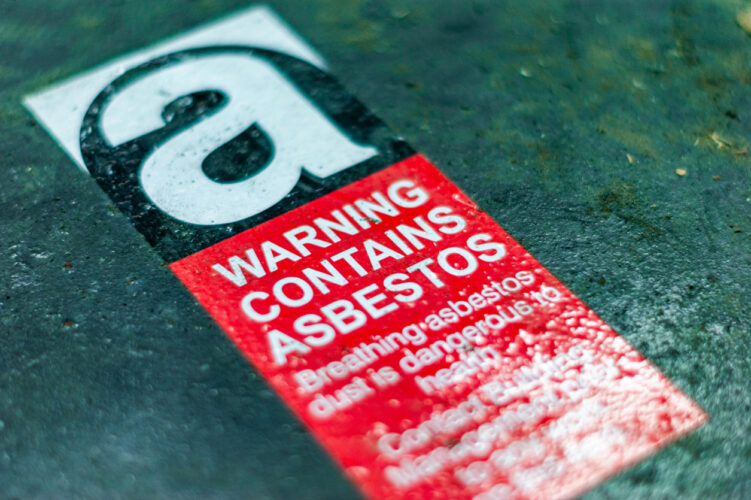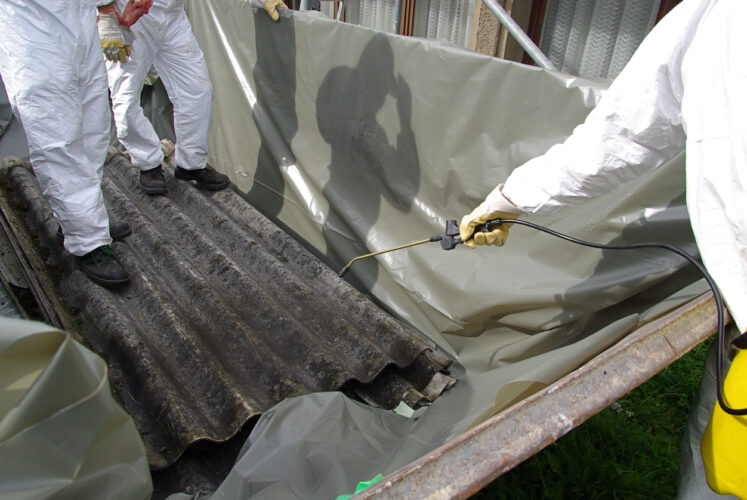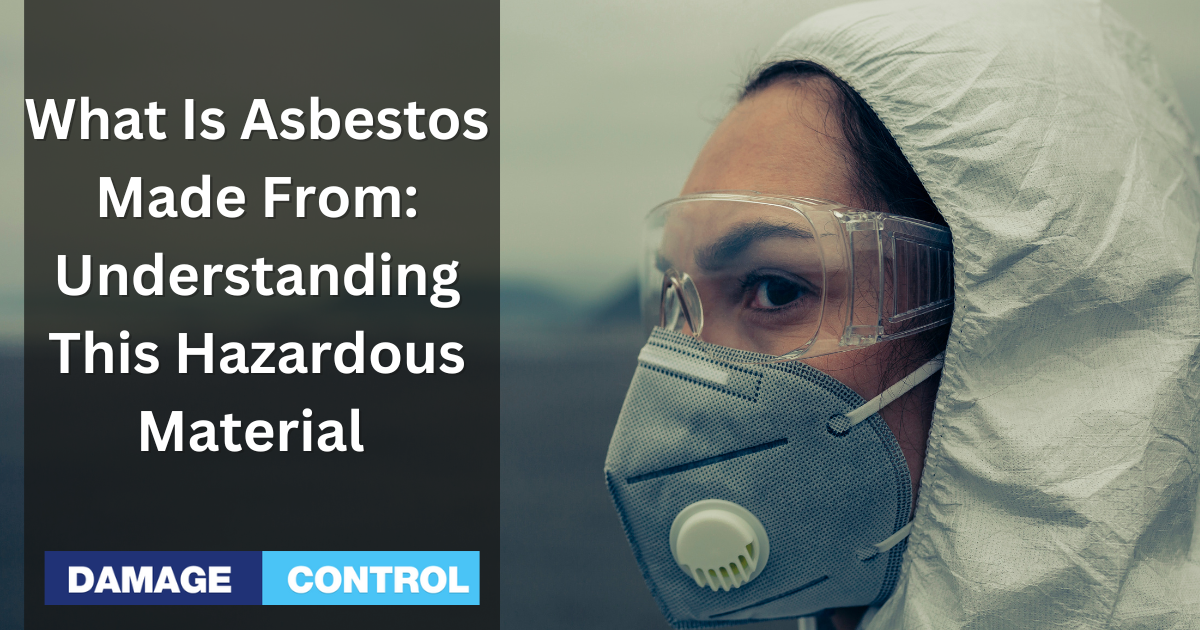What is asbestos made from? Asbestos is a naturally occurring mineral used for centuries due to its unique properties. It comprises long and thin fibrous crystals, each fiber comprising many microscopic “fibrils” that can be released into the atmosphere by abrasion and other processes.
Inhalation of asbestos fibers can lead to various dangerous lung conditions, including mesothelioma, asbestosis, and lung cancer.
Asbestos has been used in a wide range of manufactured goods, mostly in building materials, friction products, heat-resistant fabrics, packaging, gaskets, and coatings. Asbestos fibers are resistant to heat, electricity, and corrosion, making them ideal for insulation, fireproofing, and soundproofing.
However, the use of asbestos has been heavily regulated due to its health risks, and many countries have banned its use altogether.
So, what is asbestos made from? There are six types of asbestos, all of which have different physical and chemical properties. The most common types of asbestos are chrysotile, also known as white asbestos, and amphibole asbestos, which includes amosite, crocidolite, tremolite, anthophyllite, and actinolite.
Each type of asbestos has its unique properties, but all share the same health risks when inhaled.
What Is Asbestos?

Asbestos is a mineral that occurs naturally in the environment. It is composed of long, thin fibers that are resistant to heat, fire, and chemicals. Asbestos has been used for centuries for various purposes, including insulation, fireproofing, and soundproofing.
What Is Asbestos Made From?
Asbestos is made from six minerals that are all part of the serpentine or amphibole families. The most common type of asbestos is chrysotile, part of the serpentine family. The other five types of asbestos are part of the amphibole family and include amosite, crocidolite, tremolite, actinolite, and anthophyllite.
How Is Asbestos Used?
Asbestos has been used in various products, including building materials, insulation, fireproofing, and friction materials. Some common products that may contain asbestos include:
- Roofing shingles and felt
- Insulation for pipes, boilers, and ducts
- Ceiling tiles and spray-on coatings
- Vinyl flooring and adhesives
- Brake pads and clutch facings
Asbestos was widely used in the construction industry until the 1970s when its health risks became more widely known. Exposure to asbestos can cause a variety of health problems, including lung cancer, mesothelioma, and asbestosis.
The Dangers of Asbestos

Why Is Asbestos Dangerous?
Asbestos is a naturally occurring mineral commonly used in various building materials before its dangers were fully understood. When asbestos-containing materials are disturbed, tiny fibers are released into the air, which can be inhaled and cause serious health problems.
The fibers of asbestos are extremely small and can easily become lodged in the lungs. Over time, the fibers can cause damage to the lung tissue and lead to a variety of health problems, including lung cancer, mesothelioma, and asbestosis.
What Are the Health Risks of Asbestos Exposure?
Asbestos exposure can cause various health problems, ranging from mild to severe. The health risks of asbestos exposure depend on the amount of asbestos fibers inhaled and the length of exposure. Some of the most common health problems associated with asbestos exposure include:
- Lung cancer: Asbestos exposure is a leading cause of lung cancer, which can develop many years after exposure.
- Mesothelioma: This is a rare and aggressive form of cancer that affects the lining of the lungs, abdomen, or heart. Mesothelioma is almost exclusively caused by asbestos exposure.
- Asbestosis: This is a chronic lung disease that can cause shortness of breath, coughing and chest pain. Asbestosis is caused by the buildup of scar tissue in the lungs due to asbestos exposure.
- Other cancers: Asbestos exposure has also been linked to cancers of the stomach, colon, and rectum.
It is important to note that the health risks of asbestos exposure are not limited to those who worked directly with asbestos-containing materials. Family members of workers who were exposed to asbestos can also be at risk of developing asbestos-related diseases due to secondhand exposure.
Regulations and Guidelines
How Is Asbestos Regulated?
Asbestos is a highly regulated substance due to its dangerous health effects. The United States Environmental Protection Agency (EPA) and the Occupational Safety and Health Administration (OSHA) have established strict regulations to protect workers and the public from asbestos exposure.
OSHA's regulations require employers to protect workers from asbestos exposure in all industries covered by the Occupational Safety and Health Act. These regulations include specific standards for construction work, general industry work, and shipyards.
The EPA has also established regulations to protect the public from asbestos exposure. These regulations include the Asbestos Hazard Emergency Response Act (AHERA), which requires schools to inspect for asbestos-containing materials and take appropriate action to control or remove them.
What Are the Guidelines for Asbestos Abatement?
Asbestos abatement refers to the process of removing or encapsulating asbestos-containing materials. The EPA and OSHA have established guidelines for asbestos abatement to ensure it is done safely and effectively.
The EPA's guidelines for asbestos abatement include using trained and accredited professionals, using proper equipment and techniques for removing asbestos-containing materials, and disposing of asbestos waste properly.
OSHA's guidelines for asbestos abatement include using protective clothing and equipment, proper ventilation, and proper procedures for handling and disposing of asbestos-containing materials.
In addition to these federal guidelines, many states have their own regulations and guidelines for asbestos abatement. These regulations may include additional requirements for training, certification, and licensing asbestos abatement professionals.
Identifying Asbestos
Asbestos is a naturally occurring mineral that was widely used in construction materials due to its heat-resistant properties. However, asbestos is also a known carcinogen and can cause serious health problems when inhaled. As a result, identifying asbestos in buildings and materials is crucial for ensuring the safety of workers and residents.
How Can You Tell If Something Contains Asbestos?
Identifying asbestos can be tricky, as it is often mixed with other materials. However, there are a few ways to determine whether a material contains asbestos:
- Check for labels or markings: Some manufacturers labeled their asbestos-containing products, so look for any markings or labels that indicate the presence of asbestos.
- Look for visual clues: Asbestos-containing materials may have a unique appearance, such as a fibrous texture or a grayish-white color.
- Get a sample tested: The only way to definitively identify asbestos is through laboratory testing. If you suspect that a material contains asbestos, do not attempt to remove or disturb it. Instead, contact a professional to take a sample and have it tested.
What Are the Different Types of Asbestos?
There are six types of asbestos, but three are commonly found in building materials:
- Chrysotile: Also known as white asbestos, chrysotile is the most common type of asbestos found in building materials. It is often used in insulation, roofing, and brake linings.
- Amosite: Also known as brown asbestos, amosite is commonly found in insulation and cement products.
- Crocidolite: Also known as blue asbestos, crocidolite is the least common type of asbestos found in building materials. It is often used in insulation and cement products.
It is important to note that all types of asbestos are hazardous and can cause serious health problems when inhaled. As a result, it is crucial to identify and safely remove asbestos-containing materials from buildings and homes.
Asbestos Removal

What Is the Process for Asbestos Removal?
Asbestos removal is a complex process that requires specialized training and equipment. The process typically involves the following steps:
- Inspection: A qualified inspector will evaluate the building to determine the extent of asbestos contamination.
- Removal Plan: A removal plan will be developed based on the inspector's findings. This plan will outline the specific steps that will be taken to remove the asbestos safely.
- Preparation: Before the removal process begins, the area will be prepared to prevent the spread of asbestos fibers. This may involve sealing off the area with plastic sheeting and using negative air pressure to prevent the fibers from escaping.
- Removal: The asbestos-containing materials will be carefully removed and placed in sealed containers for disposal.
- Cleanup: Once the asbestos has been removed, the area will be thoroughly cleaned to ensure no asbestos fibers remain.
- Final Inspection: A final inspection will ensure that all asbestos has been removed and that the area is safe for occupancy.
Can You Remove Asbestos Yourself?
It is not recommended that you attempt to remove asbestos yourself. Asbestos removal is a dangerous and complex process that requires specialized training and equipment. If you are not properly trained, you run the risk of exposing yourself and others to asbestos fibers, which can cause serious health problems.
In addition, many states have strict regulations regarding asbestos removal, and you may be subject to fines or other penalties if you attempt to remove asbestos without proper training and certification.
If you suspect that your home or building contains asbestos, it is important to contact a qualified asbestos removal contractor. They will be able to evaluate the situation and develop a safe and effective plan for removing the asbestos.
Remember, asbestos removal is not a DIY project. It is a job that should be left to the professionals. Hiring a qualified contractor ensures that the asbestos is removed safely and that your home or building is free from this dangerous material.
Conclusion
We've journeyed through the composition of asbestos, unraveling what this hazardous material is made of. From naturally occurring silicate minerals to its durable, heat-resistant properties, asbestos carries a complex identity. However, armed with this understanding, we are better equipped to address and manage potential asbestos risks. Remember, knowledge is our greatest tool for safety and health preservation. Let's continue to educate ourselves and promote safer environments free from the threats of hazardous materials.

